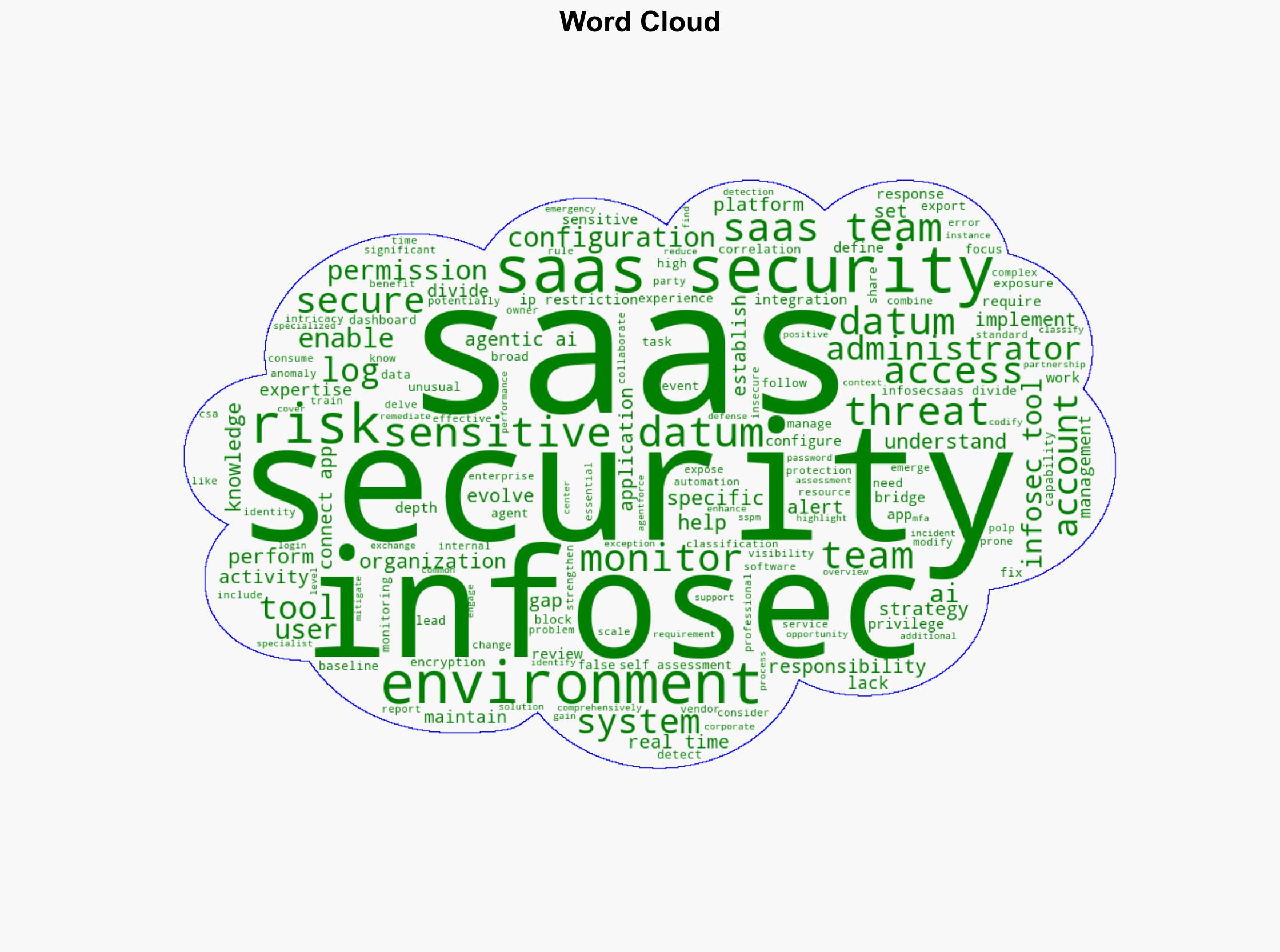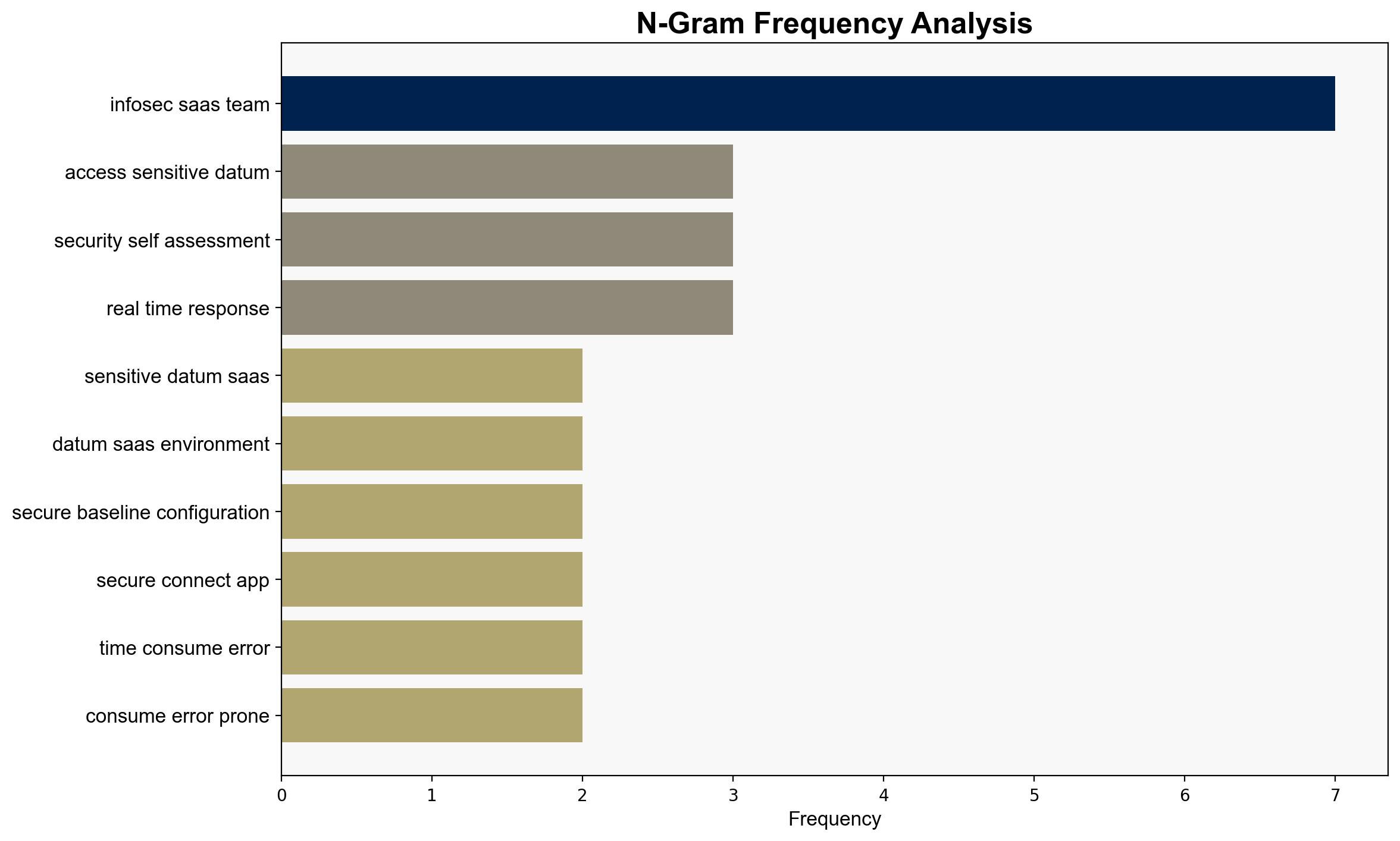Bridging the Divide Actionable Strategies to Secure Your SaaS Environments – Infosecurity Magazine
Published on: 2025-11-07
Intelligence Report: Bridging the Divide Actionable Strategies to Secure Your SaaS Environments – Infosecurity Magazine
1. BLUF (Bottom Line Up Front)
The most supported hypothesis is that the gap between infosec teams and SaaS administrators significantly contributes to security vulnerabilities in SaaS environments. This gap is exacerbated by a lack of shared understanding and inadequate security practices, leading to potential data breaches. Confidence Level: High. Recommended action includes fostering collaboration between infosec teams and SaaS administrators to establish comprehensive security protocols and enhance mutual understanding of security responsibilities.
2. Competing Hypotheses
Hypothesis 1: The primary cause of SaaS security vulnerabilities is the misalignment and lack of communication between infosec teams and SaaS administrators, leading to inadequate security practices and oversight.
Hypothesis 2: SaaS security vulnerabilities primarily stem from inherent weaknesses in SaaS platforms themselves, regardless of the coordination between infosec teams and administrators.
Using ACH 2.0, Hypothesis 1 is better supported as the evidence highlights significant gaps in communication and understanding between infosec teams and SaaS administrators, which directly contribute to security oversights. The lack of shared terminology and responsibility is emphasized, whereas Hypothesis 2 is less supported due to the absence of specific evidence pointing to inherent platform weaknesses as the primary issue.
3. Key Assumptions and Red Flags
Assumptions:
– Infosec teams and SaaS administrators possess the necessary skills to secure environments if they collaborate effectively.
– SaaS platforms are fundamentally secure if managed correctly.
Red Flags:
– Over-reliance on SaaS providers for security without adequate internal oversight.
– Potential cognitive bias towards blaming internal misalignment over platform vulnerabilities.
– Lack of detailed evidence on specific SaaS platform vulnerabilities.
4. Implications and Strategic Risks
The misalignment between infosec teams and SaaS administrators could lead to increased data breaches, resulting in financial losses, reputational damage, and regulatory penalties. The growing sophistication of threats, such as AI-driven attacks, could exploit these gaps further. If not addressed, these vulnerabilities could escalate, affecting broader organizational security and potentially leading to geopolitical tensions if sensitive data is compromised.
5. Recommendations and Outlook
- Enhance training programs to improve the security literacy of SaaS administrators.
- Establish clear communication channels and shared security protocols between infosec teams and SaaS administrators.
- Conduct regular security audits and simulations to identify and address vulnerabilities.
- Scenario Projections:
- Best Case: Improved collaboration leads to robust security measures, reducing breach incidents.
- Worst Case: Continued misalignment results in a major data breach, causing significant damage.
- Most Likely: Incremental improvements in collaboration lead to gradual enhancement of security posture.
6. Key Individuals and Entities
No specific individuals are mentioned. The focus is on roles such as infosec teams and SaaS administrators.
7. Thematic Tags
cybersecurity, SaaS security, data protection, organizational collaboration





